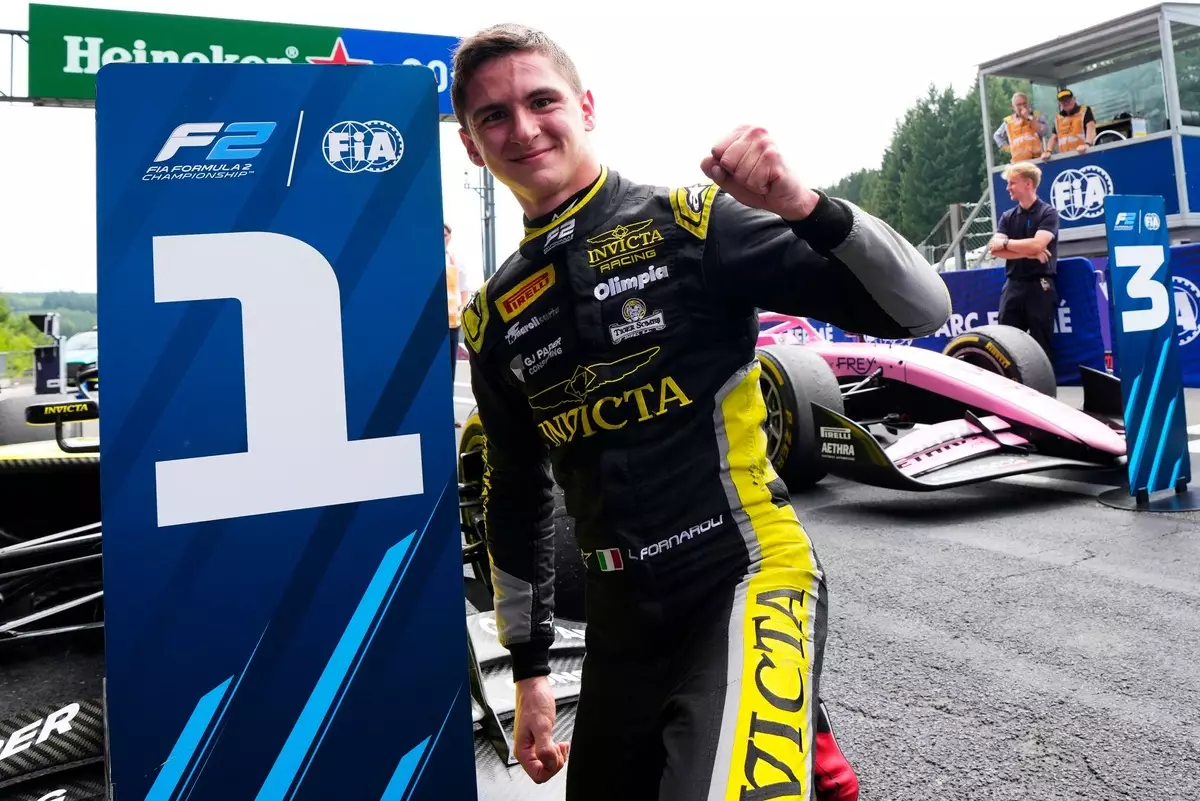In an era where junior racing pipelines are increasingly streamlined and closely interconnected with Formula 1, Leonardo Fornaroli emerges as an anomaly — a driver on the brink of reaching the pinnacle without the typical endorsements or academy backing. While most top-tier prospects are celebrated early for their affiliations with F1 programs, Fornaroli’s current position as the leader in Formula 2 feels almost revolutionary. This quiet ascent, devoid of the flashy endorsements or media frenzy that often accompanies emerging talent, prompts a critical question: why isn’t he already part of a top F1 team’s plans? His story challenges the conventional pathways to motorsport glory and raises the importance of raw, consistent talent over hype and corporate grooming.
Fornaroli’s journey highlights a significant shift in how potential drivers are evaluated. His rise shouldn’t be dismissed merely because he’s unaligned with F1 academies. Instead, it signals a need to recalibrate what skills truly matter in the cutthroat world of Formula 1. Robinson, the Invicta team principal, openly champions Fornaroli’s merits and insists that his development skills and unwavering consistency make him an invaluable asset — more so than those heavily backed by traditional pathways. If F1 teams are seeking a driver capable of executing under pressure, steadfastly delivering reliable data and maintaining composure amid chaos, Fornaroli stands out as an unpolished diamond deserving of serious consideration.
The Surprising Development of a Quiet Genius
Despite a rocky start — winning last year’s F3 title without a single race victory and enduring a long drought in competitive wins — Fornaroli has blossomed into a formidable force this season. His recent string of victories, including a commanding win at Hungaroring, demonstrates a significant development arc. This growth, coming after years of sporadic success, underscores his resilience, a trait often undervalued but critical in motorsport’s relentless pursuit of excellence.
What differentiates Fornaroli is his understated racing style, which may have caused him to fly under the radar initially. His personality isn’t flamboyant; he doesn’t rely on showmanship or media antics to attract attention. Yet, this quiet demeanor may be precisely what makes him a better fit for F1 teams that crave reliability and consistency. His ability to do “the little things right,” to execute lap after lap without mistake, reflects a maturity that is scarce among his peers. Robinson’s insights emphasize that Fornaroli’s strength lies not in fleeting brilliance but in his methodical, pressure-proof approach to racing — qualities that could redeploy F1’s developmental landscape.
The real question isn’t about his capability but about the perception gap. His accomplishments challenge the conventional wisdom that talent must be flanked by flamboyance or a pre-fabricated image to command attention. Instead, Fornaroli’s journey demonstrates that mastery of the fundamentals and unwavering focus can be far more impactful for a team’s long-term strategy.
The ‘Moneyball’ Analogy and Its Implications for F1
The analogy of Fornaroli as a “Moneyball” driver isn’t just clever branding; it reflects a fundamental shift in how racing talent is assessed. Borrowed from baseball, “Moneyball” refers to a data-driven approach that breaks away from traditional scouting and scouting heuristics, focusing instead on quantifiable, objective metrics. Applying this mindset to motorsport, Robinson argues that Fornaroli epitomizes the ideal driver for teams looking to optimize their development programs through data and consistency rather than star power.
His capacity for stable performance — producing repeatable, reliable lap times without dramaticacing moves or media stunts — makes him invaluable in a sport obsessed with incremental gains. Teams aiming to refine their car through driver feedback should prioritize drivers like Fornaroli who can serve as “data points,” allowing engineers to understand and adapt without the noise of volatility or unpredictability.
This perspective could be radical if embraced broadly within F1 circles. It suggests that teams might develop more successful strategies by valuing precision, consistency, and mental resilience over showmanship or early fame. If that’s the case, Fornaroli’s omission from next year’s grid becomes even more perplexing. His development history, combined with his current top form, makes a compelling argument: sometimes, the best drivers aren’t the loudest or the most hyped but those who quietly deliver excellence race after race.
The Future of Rising Talent and Industry Blind Spots
Fornaroli’s trajectory spotlights an uncomfortable truth for many aspiring drivers: talent alone isn’t enough. In F1’s highly commercialized ecosystem, marketing, connections, and media personas often weigh heavily in decision-making. Robinson’s candid remarks underscore an industry that may overlook “true” drivers like Fornaroli because they don’t fit the mold of the typical F1 hero — rather, they embody steadiness and mastery behind the scenes.
This raises broader questions about how F1 teams identify their future stars. Are they too reliant on social media metrics, sponsorship backing, or pre-existing relationships? Or are they beginning to realize that the most impactful drivers are often those who work diligently in the shadows, building their experience through perseverance rather than hype? The risk for F1 is missing out on genuine talent because of bias towards marketable personas. Fornaroli’s case suggests that a more nuanced, data-centric approach could unlock a pool of unrecognized drivers who possess the traits most valuable for long-term success in the sport.
His story also serves as an inspiration for drivers who prefer quiet perseverance over showy antics. It exemplifies that a relentless focus on consistency, technical development, and mental fortitude can propel a driver to the top — perhaps more reliably than transient fame or early success. The motorsport world might do well to take a hard look at their talent evaluation criteria and consider whether they’re overlooking the next true champion simply because he doesn’t crave the spotlight.
—
Note: This article challenges the conventional pathways to F1, emphasizing the potential of overlooked talents like Leonardo Fornaroli, and advocates for a more holistic, data-driven approach to driver selection.

